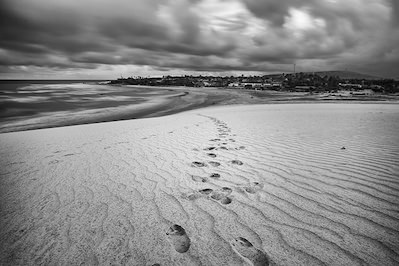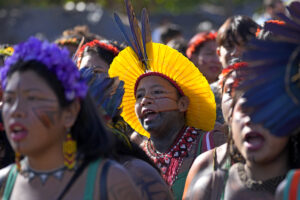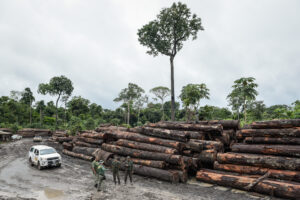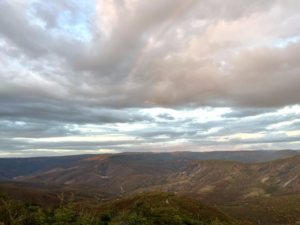Climate Change Means More Droughts for Northeastern Brazil
The huge semi-arid region, home to 53 million people, is in danger of becoming completely arid. Bart van Dorp / CC-BY-2.0
Bart van Dorp / CC-BY-2.0
By Jan Rocha / Climate News Network
SÃO PAULO — A recently published study suggests that the droughts which have traditionally affected Brazil´s semi-arid northeast are being worsened by the effects of climate change.
The region covers 18% of Brazil’s total area and is home to 53 million people, a quarter of the population of South America’s largest country. With 34 inhabitants per square mile, it is the most densely populated semi-arid region in the world.
Droughts have been recorded there since the earliest days of Portuguese colonisation in the 16th century. Many of Brazil’s leading painters and writers have portrayed the dramatic effects of the resultant famines in their works, like Candido Portinari’s 1944 portrayals of drought refugees, Os retirantes, or Graciliano Ramos’ 1938 book, Vidas Secas (Barren Lives).
More recently a federal assistance programme and the distribution of hundreds of thousands of water storage cisterns by government agencies and NGOs to rural families have helped to alleviate the effects and stop a rural exodus.
But climate scientists now warn that the droughts are getting worse and could lead to the desertification of the region, making it impossible to sustain agriculture.
The latest drought, which began in 2012 and has lasted five years, is the worst for over a century.
Drought emergencies
Crops have withered, cattle are dying, and over 700 cities and towns have declared states of emergency. Besides agriculture, industry and hydroelectric power generation are also affected as evaporation lowers the water levels in the reservoirs and lakes.
Writing in the journal Theoretical and Applied Climatology, José Antonio Marengo of the National Centre for Monitoring and Alerts of Natural Disasters and colleagues warn that “climate projections generated by the climate model suggest that from now on, more severe and prolonged droughts will be the rule, not the exception.”
Their article, Drought in Northeast Brazil — Past, present and future, is based on research which used a tool jointly developed by Brazilian and British scientists, known as PULSE — the Platform for Understanding the Long Term Sustainability of Ecosystems.
Marengo says: “Climate change will extract a heavy price from the northeast. Is it inevitable? Today there is only one certainty. In the future there will be longer and hotter drought periods.”
The effects of continuing lower-than-averge rainfall have been made worse by population growth and the increase in economic activity. As rainfall diminishes, the soil becomes drier and there is less water in the reservoirs and cisterns. The traditional rainy period, between March and May, is becoming more patchy, with gaps of several days when no rain falls.
“Climate change will extract a heavy price from the northeast”
The result is that today’s semi-arid region could become completely arid, and, says Marengo, that would favour desertification. Between 1900 and 2000 the temperature rose by 0.8°C. By 2040, it is expected to have increased by another 2°C, and if nothing is done to reverse the present trends, by 2100 average temperatures could be expected to have risen by 4.4°C.
The only plants which will be able to survive are forms of cactus. Without water for animals, crops and their own consumption, hundreds of thousands of people will have to leave the rural areas and go to the towns and cities.
This alarming but very possible scenario is almost completely ignored by politicians, who over the decades have used the droughts to further their own careers.
They promise short-term solutions like the building of reservoirs, often located on the land of big farmers, employing hungry farm labourers on work schemes, distributing water in tankers.
Campaigns for more sustainable agriculture have been left to NGOs to develop. The disastrous clearing of the caatinga, the typical scrubby vegetation of the semi-arid region, continues largely unabated.
Even the fact that the the climate scientists describe the present drought as of “an intensity and impact not seen for many decades” has failed to make it newsworthy in Brazil’s mainstream press.
Jan Rocha is a freelance journalist living in Brazil and is a former correspondent there for the BBC World Service and The Guardian.
Your support matters…Independent journalism is under threat and overshadowed by heavily funded mainstream media.
You can help level the playing field. Become a member.
Your tax-deductible contribution keeps us digging beneath the headlines to give you thought-provoking, investigative reporting and analysis that unearths what's really happening- without compromise.
Give today to support our courageous, independent journalists.









You need to be a supporter to comment.
There are currently no responses to this article.
Be the first to respond.